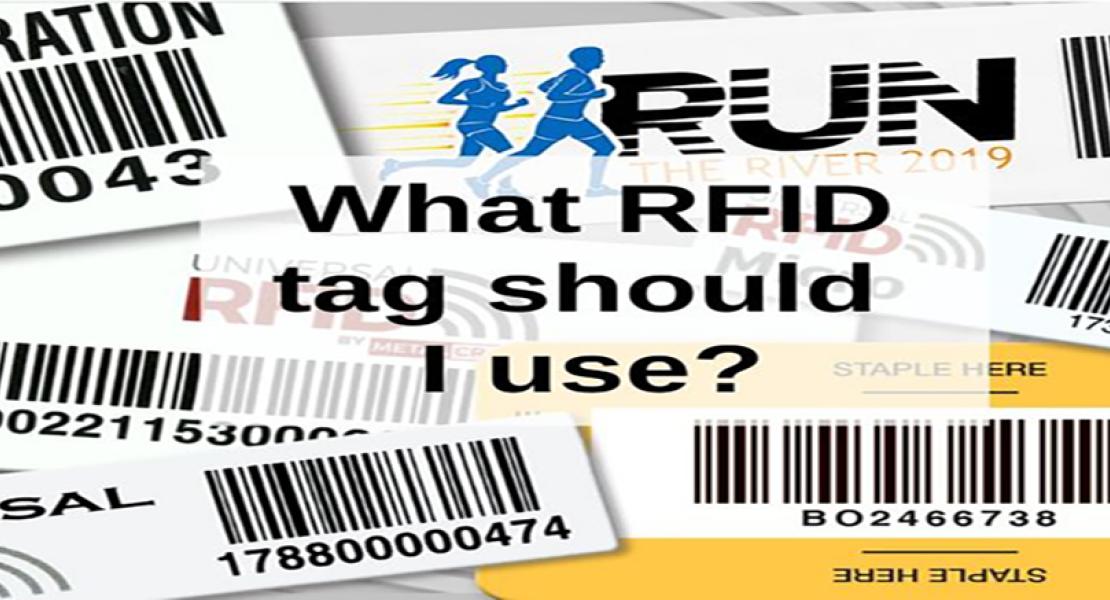Choosing the Best RFID Tag
Before we get started, for the purpose of this article, I am going to assume that we’ve already determined that an RFID tag is the best technology for your application, however, I do want to caution that this may not always be the case.
I like to think of the decision-making process for the right RFID tag in terms of a big funnel with all of the possible RFID tags at the top and, with each question you ask yourself, you remove more tags from the funnel until the right tag for your application is what you have left.
Active Or Passive – What RFID Technology Is Best For Me
After you have selected RFID as your technology of choice one of the first questions you may ask is whether or not you should use an active RFID tag or a passive RFID tag in your application. The answer to that question, and many others when it comes to RFID-related questions, is “it depends.”
Let’s look at both options. First, let’s examine passive tags. Passive tags do not have their own power source. They must be in the vicinity of an interrogator in order to “wake up.” However, there are many benefits to using passive tags.
First, they are less expensive than their active counterpart. Second, because they do not have a battery, they will last longer than an active RFID tag. Third, again because passive tags do not have a battery, they tend to be smaller and more lightweight than active RFID tags. There are, however, some drawbacks to using passive RFID tags. Compared to active RFID tags, they do offer limited data storage and a shorter read range. In addition, because they do not have a battery, they require the presence of an interrogator in order to work.
Active tags have an onboard power source used for transmitting, usually a battery. The tag uses the battery to power its integrated circuit (IC). The advantages to using active tags are the opposite of the negatives to using passive tags. First, they have more memory which means they can store more data. Second, due to their battery-powered ICs, they have longer read ranges than their passive counterparts. However, as I alluded to above, active tags are more expensive, have a shorter lifespan and are bulkier than passive RFID tags.
For the purpose of this article, I am going to assume a passive tag will work best in your application.

Choose the Right Frequency
Next, it is important to understand the difference frequencies available with passive tags in order to make the best choice for your application. There are three RFID frequencies to choose from: low frequency (LF), high frequency (HF), and ultra-high frequency (UHF).
The answer to the question of which frequency to use is the same as the question of whether to use active or passive RFID in that “it depends.” In this case it depends on the nature of the application and the product being tracked. For example, low-frequency RFID tags (125 – 134 KHz) are often used for access control and animal tracking applications. They have limited read range, yet the radio waves are able to penetrate metallic surfaces more easily than other frequencies due to their long wavelength.
Next, high-frequency RFID tags (13.56 MHz) are ideal for applications where an item’s proximity to one another could be an issue like library books. Access control is another potential application, i.e. tracking the flow of patients in hospitals, medical clinics, and other healthcare settings. NFC, or near-field communication, is a form of high frequency which includes an NDEF statement that allows information to be shared between two devices, i.e. contactless payments. Read ranges for these tags are much shorter than their UHF counterparts.
Lastly, we need to take a look at UHF or ultra-high frequency RFID tags. Due in part to their longer read ranges, UHF tags (860-960 MHz) are typically found in more open areas, i.e. warehouses and manufacturing plants where speed and efficiency are critical factors. They are also commonly used in electronic toll collection and parking access control because of their longer read ranges.
Again, for the purpose of this article, I am going to assume a passive UHF tag is going to be the best route to go for your specific application.
What Surface is the Tag Going On
The RFID tag choices don’t end here. We need to take a closer look at the environmental factors surrounding the RFID tag. For example, what kind of surface is the RFID tag going to be applied to? Is it plastic, metal, glass, wood, or something else? Matching the correct inlay to the application surface ensures optimal performance. Metal surfaces are the most obvious examples of this.
In order to get an RFID tag to read on metal you must use an on-metal RFID tag, in other words, an inlay specially designed to work on metal; one that most often uses some type of standoff to separate the inlay from the metal. Foam is the most commonly used standoff for many on-metal RFID tags. Glass is another surface for which users often optimize tag performance. In fact, there are some tags that perform better on glass than they do on plastics.
Using the funnel analogy I described earlier, we are now to the point in the decision-making process where the funnel is getting much smaller. We’ve determined the type of RFID (active/passive), frequency (LF/HF/UHF) and whether or not the application is going to require a specialty inlay because of the surface it is being applied to. The remaining environmental factors impact the actual tag construction.
Durability
How long do you want the RFID tag to last? Will the RFID tag be exposed to chemicals and if so what type and for how long? These types of questions will help determine what type of RFID tag construction is needed in order to achieve the desired outcome for your application, yet also ensure the RFID tag survives the environmental conditions it will be exposed to. For example, if an application requires a tag to be outdoors for five years you would need to use materials that would survive those conditions such as polyester rather than paper in the tag construction.
RFID tags do come in all shapes and sizes and the choices can seem overwhelming, but when you take the proper steps and select the right one for your specific application you really can maximize your RFID operations.
To learn more about our RFID tags, contact us today at [email protected].
 | About the Author: Aaron HobertAaron Hobert is our RFID Technical Specialist. Hobert joined Metalcraft in September of 1994 as a Litho Press Operator, became the Autograph Team Lead in 1998 and in April 2005 he became the RFID Sales Support Rep. He was named our RFID Technical Specialist in 2008. Aaron lives outside Charles City with his wife Diane. Mobile Phone: 641-330-2660 Email: [email protected] Office: 3360 9th St. SW, Mason City, IA 50401 Office Phone: 641-423-9460 |




